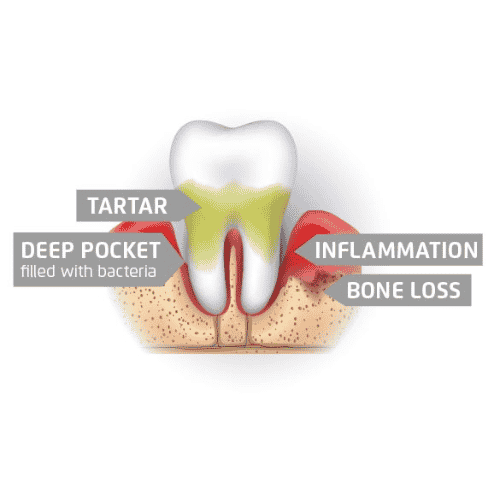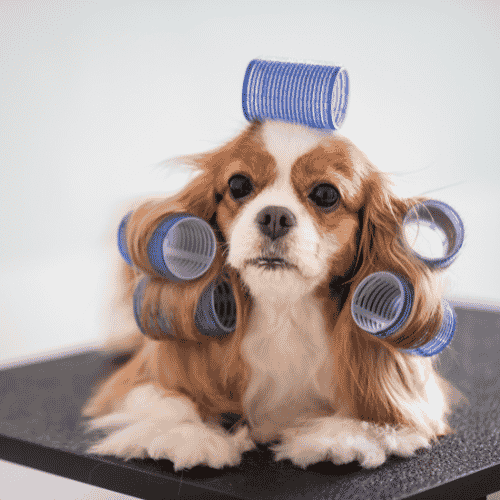Your dentist has most likely stressed the importance of cleaning your teeth and preventing tartar accumulation. The same goes for our furry companions. The presence of tartar on a dog’s teeth can lead to tooth and jawbone deterioration and other forms of dental illness. If you take good care of your dog’s teeth and understand how to soften tartar on dogs, you may help reduce the danger that they will get dental problems and even perhaps help them live longer.
Let us discuss how to soften dog tartar in detail.
Regular home dental care is the greatest way to soften tartar on a dog’s teeth. Regularly brushing your dog’s teeth at least once a day with a rotating toothbrush and dog-specific enzymatic toothpaste can also soften dog tartar.
Additionally, ensure you take your pet to the veterinarian at least once per year to check and clean their teeth. Continue reading to find out how to soften tartar from a dog’s teeth and learn about the various methods you may use to achieve these goals.
Neem Oil Dog Toothpaste – Is It Safe For Dogs?
How Does Tartar Form, and What Does It Do?
Plaque is a sticky material that accumulates on teeth a few hours after eating. Within twenty-four hours, plaque will begin to become more rigid due to its reaction with the salts found in saliva. When plaque is allowed to continue to harden and mineralize, tartar will eventually develop on the plaque’s surface. Tartar, or calculus, can form above and below the gums.
Tartar may cause damage to the gums and teeth in two different ways.
- First, tartar develops a rough surface that germs can thrive on. Bacteria can cause gingivitis, which causes painful bleeding. Gingivitis leads to periodontal disease, which causes inflammation, discomfort, and tooth loss. As tartar forms along the gum line, it pulls the gums away from the teeth.
- Second, tartar bacteria can enter the bloodstream and affect the heart and kidneys.
How Easy Is It to Soften the Dog’s Tartar?
When dealing with the tartar on a dog’s teeth, you must consider the dog’s dental hygiene. This is essential to prevent tartar from forming or to limit its growth if it has already formed.
This action helps remove plaque and food particles from teeth and jaws. Manual brushes don’t help treat dogs’ teeth. There are specialized brushes that may be utilized, and you should use them efficiently.
Tips for Softening Dog’s Tartar
Here are some ways to soften a dog’s tartar:
High-Power Rotating Brushes:
There are tartar-softening brushes that are specifically designed for usage, and it is essential to make good use of them. When removing tartar from your dog’s teeth, the manual and traditional brushes will not be beneficial. The high-powered revolving brushes that are powered by a battery are great for removing plaque and softening tartar because of their design. They clean each tooth.
Specialized Toothpaste:
When brushing your dog’s teeth, you may give them an enzymatic paste instead of traditional toothpaste. They not only assist in softening tartar but also help cope with the unpleasant breath it causes.
Chew Toys
Chew toys provide a dog with more benefits than just entertainment and mental stimulation. The more abrasive a toy is, the better it is for a dog’s teeth to be cleaned when they chew on it. Plaque and tartar are broken off his teeth as the chew toy is rubbed against them.
Additionally, several chew toys on the market have been created to promote good dental hygiene. Most of these toys have anti-tartar ingredients to remove plaque and tartar more efficiently.
Dental Sprays
You may apply a dental spray directly on your dog’s gums and teeth to soften tartar. The sprays are effective in preventing tartar growth and making your dog’s breath smell better. Check the spray’s instructions since many suggest dogs shouldn’t eat or drink for an hour after application.
Adjust Your Dog’s Diet:
The kind of food that your dog eats has a significant impact on this aspect. Increase the amount of raw meat, raw bones, and dry kibble your dog consumes in his diet. Plaque and tartar may be removed from your dog’s teeth with dry dog food.
Mouthwash
Magic mouthwash may be introduced to your pet’s water to reduce plaque and tartar. If your dog does not like having its teeth cleaned, or if you do not have the time to brush your dog’s teeth every day, then this product is perfect for you.
You may add these ingredients to your dog’s water to help eliminate plaque and tartar in only seven days, leaving him fresh breath. When you first begin using these items, you must also provide your dog with freshwater without additions, as some dogs may first refuse to drink the water additives.
Coconut Oil
You might also use coconut oil to brush your dog’s teeth instead of regular toothpaste. It naturally cleans the teeth, softens tartar on the dog’s teeth, and has antibacterial characteristics.
Oral Hygiene Dental Water Additives
One of your other effective options is to use a dental water additive to reduce tartar from your dog’s teeth at home. Simply add the ingredient to your dog’s drinking water to keep their mouth clean. Because dental water additives are odorless and tasteless, your dog should be able to continue drinking as normal without experiencing any adverse effects from the treatment.
How to Tell if Dogs are Bonded to Each Other: Signs of Friendship
Is It Worth Visiting a Doctor to Soften the Dog’s Tartar?
If tartar develops and worsens, consult a vet immediately. It’s necessary to prevent gum and dental disorders in your dog. In addition to this, the dog may have periods of severe discomfort.
Also, veterinarian tartar treatment is rapid and efficient. You’ll need a considerable amount to pay for veterinarian specialist care.
Is Dog Tartar a Problem?
After a dog eats, food and saliva combine to produce sticky, yellow plaque or tartar. It causes health problems in dogs. The bacteria that cause tartar to become sticky also contribute to the growth of more bacteria. Too much bacteria on the teeth can result in gum inflammation, the loss of teeth, poor breath, abscesses, and other dental health issues.
What Dissolves Tartar in a Dog’s Teeth?
If you wish to get rid of tartar on your dog’s teeth, you should start by cleaning them regularly. You might also try dental wipes or sprays designed specifically for dogs, dental chews designed specifically for dogs, or even coconut oil. Providing your dog with an increased number of toys to chew on will also assist in the removal of tartar from their mouth.

Doctor of Veterinary Medicine (D.V.M.) at Nation Taiwan University,Master of Science (M.S.) in Biomedical Engineering at National Taiwan University of Science and Technology






